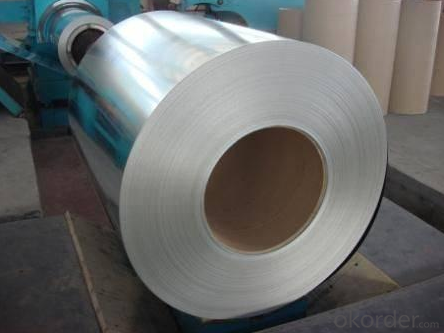Quick Details
Standard: ASTM
Grade: SHS
Type: Steel Coil
Surface Treatment: Galvanized
Application: Solution hardened steel
Width: 600-1534mm
Length: Coil
OKorder Service Pledge
OKorder Financial Service
You Might Also Like
Standard: ASTM
Grade: SHS
Type: Steel Coil
Surface Treatment: Galvanized
Application: Solution hardened steel
Width: 600-1534mm
Length: Coil
| Packaging Details: | Oscillated wound: one coil per bundle, inner is the protecting humidity-proof wax paper. Medium is plastic film. Outer is sackcloth or compound paper packing. Coil to be laid on single type pallet (one pile per pallet) |
|---|---|
| Delivery Detail: | Depends on specification and order quanity. |
Feature:
(1) Type of zinc coating finish: regular spangle, minimized spangle and skin-pass.
(2) Types of surface qualities: as coated surface, improved surface and best quality surface.
(3) Surface treatment: chemically passivated, chromate-free passivation, phosphate, anti-finger print, phosphateand, self lubricating film, and untreated.
Steel Grade | Chemical Composition (%) | Mechanic Property | C.B of Coating | Coating | ||||||
C | Si | Mn | S | P | T.S | Y.S | E.L | |||
x103 | x103 | x102 | x103 | x103 | Mpa | Mpa | % | D=0 180° | G/M² | |
JIS G3302 SGCC | 12 | 30 | 41 | 31 | 21 | 480 | 300 | 13 | OK | Z60-150 |
JIS G3302 SGCH | 12 | 10 | 21 | 18 | 8 | 680 | 650 | OK | Z60-150 | |
ASTM A653 CS.B | 20 | 30 | 60 | 35 | 30 | 386 | 205-380 | 20 | OK | Z60-275 |
DX51D+Z | 29 | 21 | 18 | 1.8 | 11 | 355 | 245 | 38 | OK | Z60-275 |
G550 | 20 | 6 | 73 | 5 | 17 | 715 | 654 | 8 | OK | Z60-275 |
Tensile test characteristics

What is the application of Steel Coil?
There are two sides,one is out side: Workshop, agricultural warehouse, residential precast unit, corrugated roof, roller shutter door, rainwater drainage pipe, retailer booth;the other is inside: Door, doorcase, light steel roof structure, folding screen, elevator, stairway, vent gutter.

Send your message to us
OKorder Service Pledge
OKorder Financial Service
Similar products
Hot products
Hot Searches
Related keywords